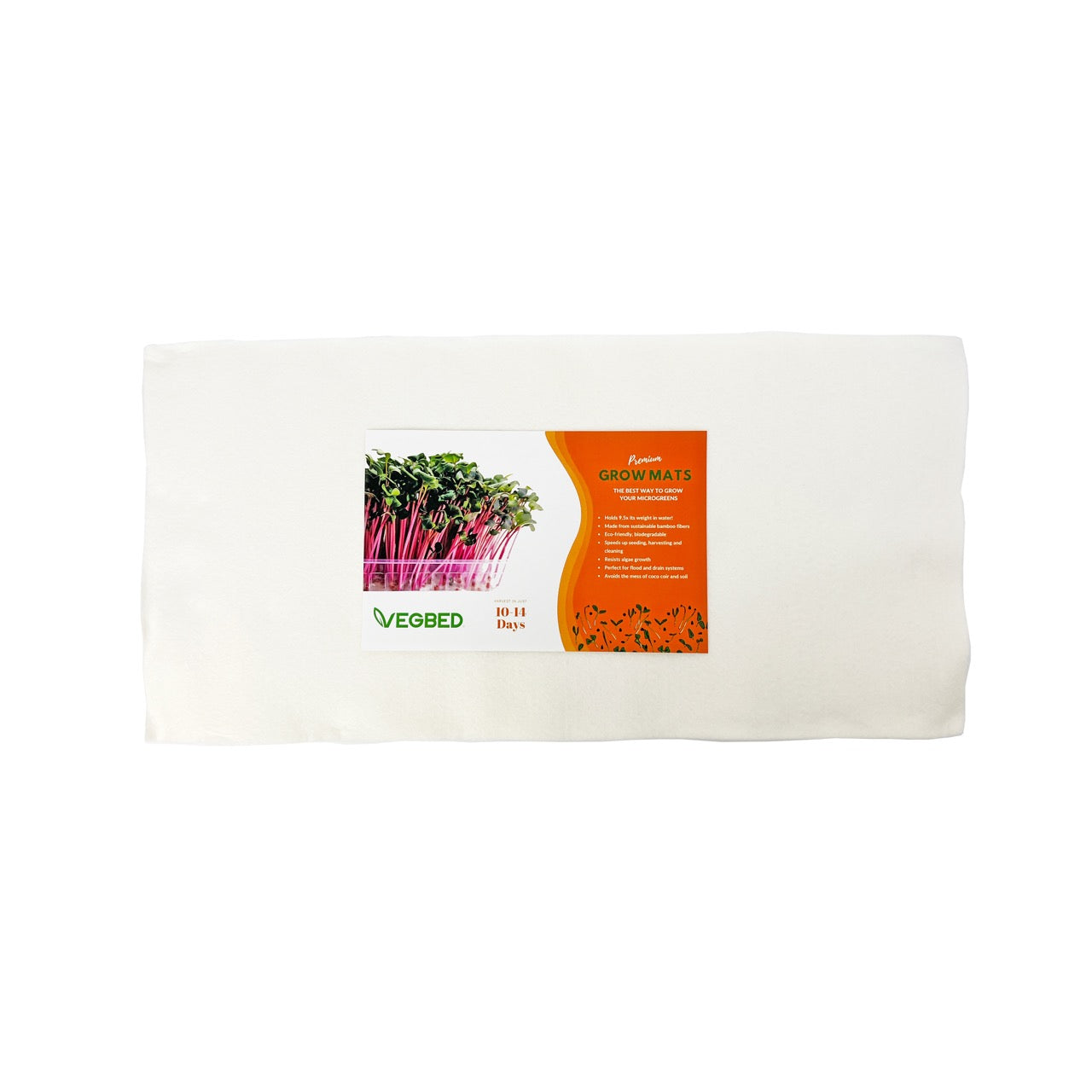Starting your own microgreen garden is an exciting venture into the world of indoor farming. Microgreens are not only nutritious and flavorful but also quick and easy to grow, making them perfect for beginners.
In this blog, we'll explore some of the best varieties of microgreens that are ideal for those just starting out.
Why These Microgreens Are Best for Beginners:
These microgreen varieties are perfect for starting because they're:
- Fast Germinators: They sprout quickly, giving you results fast to keep you motivated.
- Forgiving Growers: They tolerate minor mistakes in watering or light, ideal for learning the ropes.
- Mild Flavors: They generally have pleasant flavors that appeal to most people.
Top Microgreen Picks for Beginners:
- Pea Shoots (Pisum sativum) Pea shoots are a popular choice for beginners due to their robust growth, mild flavor, and versatility in the kitchen. These tender greens boast a sweet, pea-like taste and a crunchy texture, perfect for adding a pop of freshness to salads or stir-fries. They are also rich in vitamins A, C, and K, as well as protein and fiber, making them a nutritious addition to any meal.
- Sunflower (Helianthus annuus): Sunflower microgreens are prized for their nutty flavor and crunchy texture, reminiscent of fresh sunflower seeds. They are easy to grow and require minimal maintenance, making them ideal for beginners. They are packed with vitamins E and B, as well as essential minerals like zinc and selenium, making them a nutritious and delicious addition to salads, sandwiches, and wraps.
- Radish (Raphanus sativus): Radish microgreens are known for their spicy kick and vibrant color, adding a burst of flavor and visual appeal to any dish. They are quick to grow and thrive in a variety of growing conditions, making them an excellent choice for beginners. They are rich in antioxidants, vitamins, and minerals, making them a healthy and flavorful addition to salads, tacos, and sushi rolls.
- Broccoli (Brassica oleracea): Broccoli microgreens are known for their mild, slightly peppery flavor and tender texture, making them a favorite among beginners and seasoned growers alike. They are loaded with vitamins A, C, and K, as well as antioxidants and fiber, making them a powerhouse of nutrition. They are delicious raw or lightly sautéed and can be added to salads, sandwiches, and omelets for a boost of flavor and nutrition.
- Kale (Brassica oleracea var. acephala): Kale microgreens are celebrated for their earthy flavor and hearty texture, making them a nutritious and flavorful addition to salads, smoothies, and sandwiches. They are packed with vitamins A, C, and K, as well as antioxidants and fiber, making them a powerhouse of nutrition. They are easy to grow and require minimal maintenance, making them an excellent choice for beginners.
Ready to Explore Further?
As you gain confidence, experiment with other microgreen varieties! Remember to research specific needs before planting, as some might require different conditions.
Tips for Microgreen Success:
- Quality Seeds: Invest in seeds specifically labeled for microgreens.
- Right Medium: Popular options include organic potting soil, coconut coir and bamboo fiber mats from Vegbed.
- Light Matters: Most microgreens need good indirect sunlight. Supplement with LED grow lights if needed.
- Consistent Moisture: Aim for evenly moist but not soggy growing medium.
- Careful Harvest: Use sharp scissors to snip the greens just above the soil line.
Growing your own microgreens is rewarding. It allows you to enjoy fresh, nutrient-rich greens year-round, regardless of the season or climate. With these beginner-friendly varieties and a little care, you'll be well on your way to cultivating your own microgreen garden in no time! So, get planting, and discover the delicious world of microgreens for yourself!



